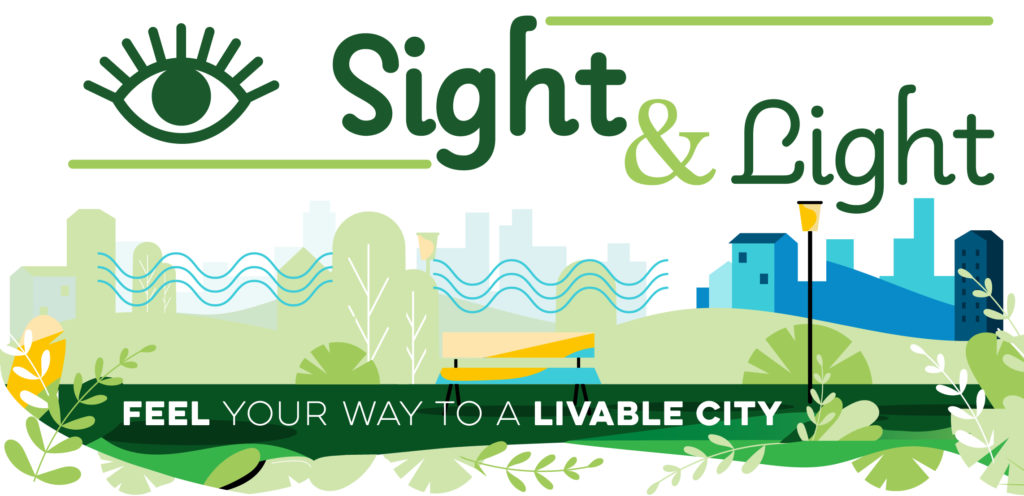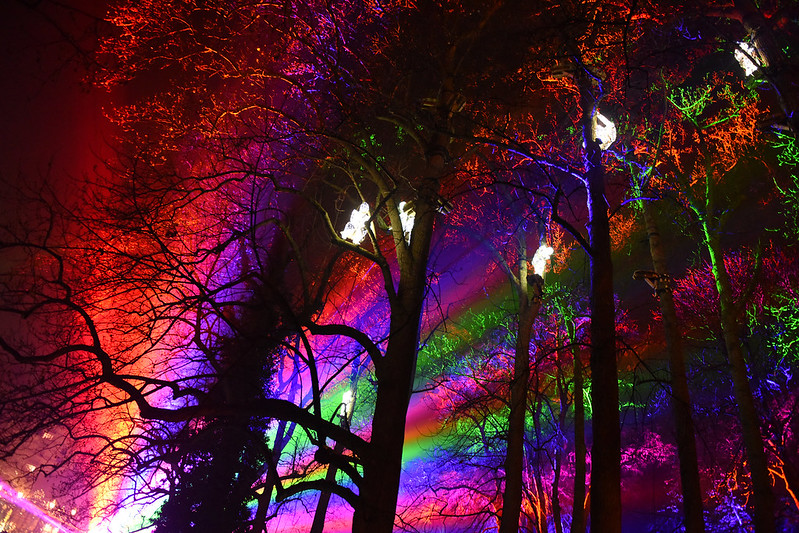Feel Your Way To A Livable City: SIGHT & LIGHT

The 5 senses are some of the most powerful and accessible tools we have to create the city we want to live in now and give to future generations. Our senses or “feelings” about a place are often disregarded by traditional planning processes, but if honored, can guide us to build environments that nurture our biology. By supporting our biology, we naturally support the biological processes of fellow living creatures and plants and make our city more sustainable.
In the Feel Your Way To A Livable City series, we invite you to embrace the wisdom of your senses and empower you with knowledge to advocate for the built environment your body and community needs to thrive.
First up, sight — the sense human biology has adapted most keenly to — and how our attempts to access it after dark might be hurting our bodies and minds.
Street lighting is important for cities to get right so people can move about safely and comfortably and enjoy the public spaces of the City after dark. It’s also something San Francisco hasn’t figured out yet.
SF’s street lighting standards are derived from mid-century highway standards. They call for widely-spaced lights, high on arching poles, which wash light evenly over the roadway surface. Sidewalk lighting is incendental. The color of light is given little thought, and lamps were often chosen by what was cheapest to install and maintain, rather than what gives the best quality light. Effective pedestrian-scale lighting has been installed in a few places in the City, but it’s still the exception.
The highway lighting ethos works best in places without trees. Where the tree canopy is robust and healthy, little light reaches the sidewalk. San Francisco is still one of the country’s most treeless cities, but our tree cover has increased fitfully and incrementally over the decades, and improving tree cover is a civic goal. We shouldn’t have to choose between robust and healthy street trees and good sidewalk lighting, but the City’s street lighting standards create this unnecessary dilemma.
Another problem with setting lights high is light trespass. Lighting the sidewalk is a nighttime amenity, but light cast elsewhere – into residents’ windows, or the night sky – is pollution. There is strong evidence that light trespass disturbs our sleep, and endangers the other living creatures we share the City with. Well-designed urban street lighting generally sets lights below the tree canopy, either on pedestrian-scaled poles or fixtures mounted on street-facing buildings, and shields the lamps to direct most of the light downwards.
Lights in or on buildings, building setbacks, signs, and awnings are part of the street lighting system, and shouldn’t be ignored. Done well, signs, awnings, exterior building lighting, and lighting from storefronts improve urban safety and livability; done badly or selfishly they erode it, degrade public spaces, and make neighborhoods less livable.
Light On Leadership
For years neighbors and merchants across the City have told us how important better street lighting is for making their streets and neighborhoods more comfortable, safe, and inviting – and how unresponsive the City has been.
Over half of the City’s street lights are owned and operated by the Streetlight Services Division of San Francisco’s Public Utilities Commission (SFPUC). SFPUC hasn’t made improving street lighting a priority, and Streetlight Services hasn’t had strong leadership. Most of the rest of our street lights are on poles owned by regulated utilities, principally PG&E. Street lights on a few streets are built and maintained by other city agencies, like Recreation and Parks or the Port.
Two years ago we worked on legislation to reform San Francisco’s street frontage requirements for new buildings. It proposed requiring large new buildings with significant public frontage to provide adequate nighttime lighting to adjacent sidewalks, while preventing light trespass into residents’ windows or the night sky. Planning Department staff opposed the provision, and the sponsoring supervisor agreed to nix it. The Planning Department was wrong; large building projects should enhance the adjacent sidewalks, including lighting them appropriately. Merchants are now are pleading with the City for economic recovery grants and launching Kickstarter campaigns to install adequate sidewalk lighting in commercial districts.
We need better standards, and a City strategy for improving sidewalk lighting. Mayor Breed has made small business and commercial district recovery her highest priorities. It should be clear to all of us by now how important sidewalks and public life are to commercial vitality and community, and that getting sidewalk lighting right is an important part of helping small business and commercial districts thrive in the future.
Lighting Laggard to Lighting Leader

The French city of Lyon is a great model for cities to follow. The city developed a lighting master plan decades ago, and is working on its third update. Lyon’s plan isn’t one-size fits all; it includes a menu of lighting standards for different parts of the city, from wilderness parks lit by the moon and stars to bright central-city commercial streets, along with specific lighting plans for monuments like civic buildings, churches, and bridges. Lyon approaches lighting as both an art as a science, and celebrates public lighting as public art in its annual Festival of Light which draws Lyonnais and people from around the world every winter.
It’s time for City government to see the light. The pandemic has impressed on all of us how important public spaces are to our health, our social and civic lives, and a robust, equitable, and diverse local economy. Projects like The Bay Lights have become beloved additions to our City.
Department heads at several of the agencies responsible for the city’s fractured streets governance are new or soon to be appointed, making this an opportune time to demand new thinking and effective leadership on San Francisco’s lighting standards. With a push from citizens like you and leadership from our elected and appointed officials, San Francisco can go from lighting laggard to lighting leader.
